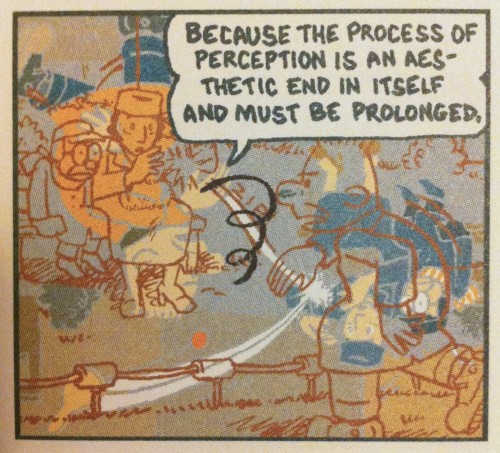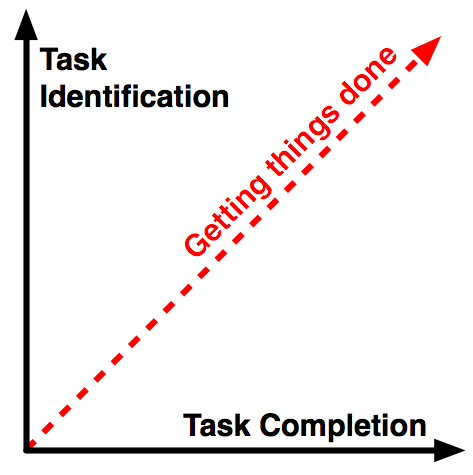From “Typologies, taxonomies, and the benefits of policy classification” by Kevin B. Smith (Policy Studies Journal, Sep 2002):
There are two basic approaches to classification. The first is typology, which conceptually separates a given set of items multidimensionally… The key characteristic of a typology is that its dimensions represent concepts rather than empirical cases. The dimensions are based on the notion of an ideal type, a mental construct that deliberately accentuates certain characteristics and not necessarily something that is found in empirical reality (Weber, 1949). As such, typologies create useful heuristics and provide a systematic basis for comparison. Their central drawbacks are categories that are neither exhaustive nor mutually exclusive, are often based on arbitrary or ad hoc criteria, are descriptive rather than explanatory or predictive, and are frequently subject to the problem of reification (Bailey, 1994).
A second approach to classification is taxonomy. Taxonomies differ from typologies in that they classify items on the basis of empirically observable and measurable characteristics (Bailey, 1994, p. 6). Although associated more with the biological than the social sciences (Sokal & Sneath, 1964), taxonomic methods–essentially a family of methods generically referred to as cluster analysis–are usefully employed in numerous disciplines that face the need for classification schemes (Lorr, 1983; Mezzich & Solomon, 1980).
The article then goes on to explain the difficulty of applying the more strict taxonomic classifications to, in this case, policy:
…the empirical qualities of many policies are not immediately apparent. Scholars such as Steinberger (1980), T. A. Smith (1982), and, especially, Schneider and Ingram (1997) make a persuasive case that the very concept of a policy category is a social construction, something rooted in individual perceptions. What distinguishes a redistributive from a regulatory policy is an individual judgment, not an observable, policy-specific equivalent to height or length. This argument is at the heart of critiques of Lowi’s work, and it creates obvious difficulties in making the shift from a typology to a taxonomy.
I also like this lecture outline from a University of Illinois at Urbana Champaign entitled “ What Isn’t in a Name?: Terminological Misapprehensions Between 20th-Century Linguistics” that explains why the terms “taxonomy” and “typology” are not unbiasedly embraced:
II. CASE-STUDY 1: TYPOLOGY vs. TAXONOMY — positively- vs. negatively- valued by linguists; negatively- vs. positively-valued by biologists
- Typology as a laudable goal in linguistics:
a. From the Research Centre for Linguistic Typology (RCLT, La Trobe University) mission statement: “putting forward inductive generalisations about human language”.
b. From Association for Linguistic Typology mission statement: “the scientific study of … cross-linguistic diversity and the patterns underlying it”.
c. Existence of societies like the Association for Linguistic Typology, journals like Linguistic Typology or Sprachtypologie und Universalienforschung, and research centers devoted to typology (RCLT, some of the Max Planck institutes (e.g., at Nijmegen and at Leipzig), etc.)
- Typology as a tainted term (and concept) in modern biology.
a. In most 20th- (and 21st-) century biology, typology invokes the typological species-concept, an essentialist notion that, along with many other scholars, Mayr (1982) holds responsible for delaying the proposal, defence, and acceptance of legitimate evolutionary ideas prior to Darwin’s 1859 Origin of Species.
b. Mayr 1982:256: In “the essentialist species-concept, … each species is characterized by its unchanging essense (eidos) and separated from all other species by a sharp discontinuity. Essentialism assumes that the diversity of inaminate as well as of organic nature is the reflection of a limited number of unchanging universals (…[cf.] Hull 1975). This concept ultimately goes back to Plato’s concept of the eidos, and this is what later authors had in mind when they spoke of the essence, or ‘nature’, of some object or organism. All those objects [that] belong to the same species … share the same essence”.
c. The link from essence to type is made as follows; cf. Mayr 1982: 256: “The presence of the same essence is inferred on the basis of similarity. Species, thus, were [once] simply defined as groups of similar individuals that are different from individals belonging to other species. Species, thus conceived, represent different ‘types’ of organisms. Individuals… do not stand in any special relation to each other; they are merely expressions of the same eidos. Variation is the result of imperfect manifestations of the eidos”.
- Taxonomy/taxonomic as a frequent term of reprobation in linguistics.
a. Recall Chomsky’s 1962, 1964 attacks on Post-Bloomfieldian American structuralist phonemics as involving, not (usually) the classical or autonomous phonemic level, but the taxonomic phonemic level. Here, the intended criticism is rather explicit.
b. Only implicit, though, are criticisms like those that we both heard from our own (ca. 1975) linguistics-professors, exhorting us not to act like Post-Bloomfieldian American structuralists; e.g.: “Make generalizations going beyond the original set of facts that you were given; don’t just rearrange the data!” — recall that Greek taxo-nom-ía originally involved, literally speaking, the ‘arrangement-law…’, or ‘law of arrangement…‘….
- Yet taxonomy has long been an extremely positive term in modern biology (and the one positively evaluated use of type in biology involves type specimens, which are employed taxonomically!).
a. Taxonomy is often employed synonymously (e.g., by Mayr) with systematics (and/or classification): “The terms systematics and taxonomy are considered by me as approximately synonymous…[; i]n America…[,] the term taxonomy seems to be preferred…[; i]n the rest of the world…[,] the term systematics seems to be more widely used” (Mayr 1942/1982: 6n.1).
b. And, as for the importance of systematics: “It is the basic task of the systematist to break up the almost unlimited and confusing diversity of individuals in nature into easily recognizable groups, to work out the significant characters of these units, and to find constant differences between similar ones. Furthermore, [(s)]he must provide these units with ‘scientific’ names which will facilitate their subsequent recognition by workers throughout the world…. Even this ‘lowest’ task of the systematist is of tremendous scientific importance. The entire geological chronology hinges on the correct identification of the fossil key species. No scientific ecological survey should be carried out without the most painstaking identification of all the species of ecological significance. Even the experimental biologist has learned to appreciate the necessity for sound, solid identification work” (Mayr 1942/1982: 9).

